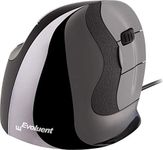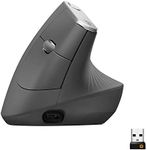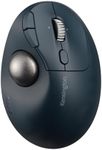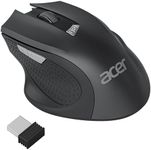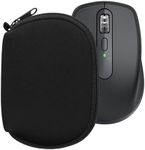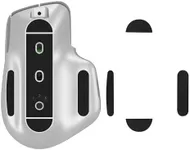Buying Guide for the Best Computer Mouse For Arthritis
Choosing the right computer mouse is crucial, especially if you have arthritis. The right mouse can help reduce strain and discomfort, making your computer use more comfortable and efficient. When selecting a mouse, consider factors such as ergonomics, button placement, and ease of use. Here are some key specifications to look for and how they can impact your experience.ErgonomicsErgonomics refers to how well the mouse fits and supports your hand. This is particularly important for individuals with arthritis, as a well-designed ergonomic mouse can reduce strain and discomfort. Look for mice that are specifically designed to support the natural shape of your hand and wrist. There are various shapes and sizes available, such as vertical mice, which can help keep your wrist in a more natural position, or contoured mice that provide additional support. Choose a mouse that feels comfortable and reduces pain during use.
Button PlacementButton placement is about where the buttons are located on the mouse and how easy they are to press. For someone with arthritis, it's important to have buttons that are easy to reach and require minimal force to click. Some mice have customizable buttons that can be programmed for different functions, which can reduce the need for repetitive movements. Look for a mouse with buttons that are positioned in a way that feels natural and comfortable for your hand.
Grip StyleGrip style refers to how you hold the mouse. There are three main types: palm grip, claw grip, and fingertip grip. The palm grip involves resting your entire hand on the mouse, which can be more comfortable for those with arthritis. The claw grip involves arching your fingers and using your fingertips to control the mouse, which might be less comfortable for arthritic hands. The fingertip grip involves using just your fingertips to move the mouse, which can also be challenging for those with arthritis. Choose a mouse that supports a grip style that feels most comfortable for you.
WeightThe weight of the mouse can affect how easy it is to move and control. A lighter mouse can be easier to maneuver and may reduce strain on your hand and wrist. However, some people may prefer a heavier mouse for better control and stability. Consider your personal preference and comfort when choosing the weight of your mouse. If you have arthritis, a lighter mouse might be more suitable to reduce the effort required to move it.
SizeThe size of the mouse should match the size of your hand. A mouse that is too small or too large can cause discomfort and strain. Measure your hand and compare it to the dimensions of the mouse to ensure a good fit. A properly sized mouse will allow you to use it comfortably without having to stretch or compress your hand excessively. This is especially important for individuals with arthritis, as a well-fitting mouse can help reduce pain and improve usability.
Wireless vs. WiredWireless mice offer the convenience of no cables, which can reduce clutter and make it easier to move the mouse around. However, they require batteries or charging, which might be a consideration for some users. Wired mice, on the other hand, provide a consistent connection without the need for batteries but can be less convenient due to the cable. Consider your preference for convenience and ease of use when deciding between wireless and wired options. For those with arthritis, a wireless mouse might be more convenient and easier to handle.
